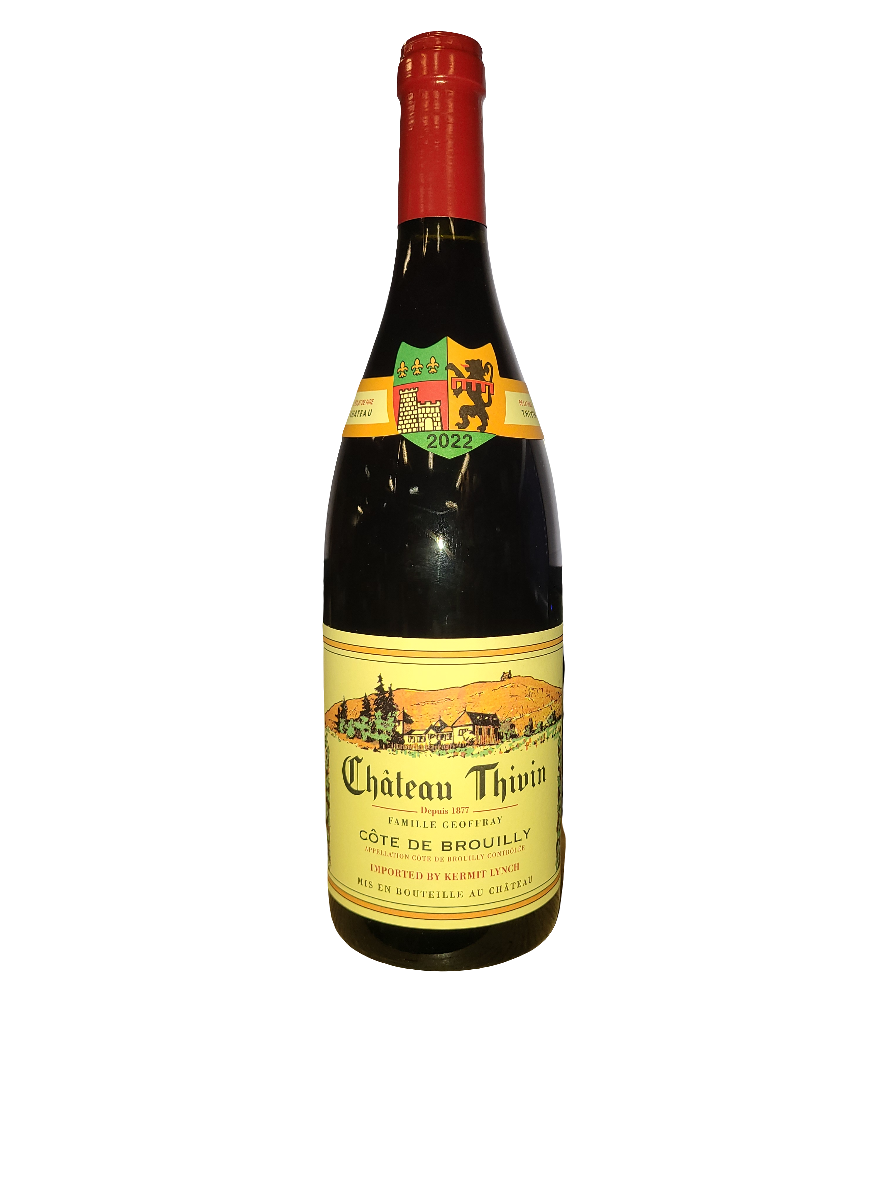1
/
of
1
Chateau Thivin Cote De Brouilly - 2022 (750ml)
Chateau Thivin Cote De Brouilly - 2022 (750ml)
Regular price
$31.99
Sale price
$31.99
Regular price
$39.99
Unit price
/
per
Availability:
18 In Stock
$25 Shipping on Orders +$299
Couldn't load pickup availability
Share :

- varietal
- Region
- Sub - Region
- Type
- Reviews
Gamay is one the lightest dark skinned varieties synonymous with the French region of Beaujolais in the Rhone department. A typical Beaujolais is light bodied and displays aromas of freshly picked red fruit with a bright acidity on the palate. Although the finest can age gracefully, most of what is produced is for early consumption. Carbonic maceration is a popular technique used which tends to overlay distinctive aromas of banana and gum. Outside of Beaujolais it is grown in the Savoie region and bordering country, Switzerland. Gamay is best enjoyed chilled or slightly below room temperature and makes a great accompaniment to cheese and charcuterie.
Two hundred miles south east of Paris lies the famous and historic wine region, known in French as Bourgogne. The Cote d'Or, the heartland of the region, consists of two distinct sub-regions split on either side of the town of Beaune.The Côte de Nuits to the north, includes the famous villages of Vosne-Romanee, Gevrey-Chambertin, and Nuits-Saint-Georges and are known primarily for making red wine from Pinot Noir.Although The Côte de Beaune to the south still makes some magnificent reds (see Volnay and Pommard), white wine made from Chardonnay is the main focus. The most famous villages are Puligny-Montrachet and Meursault. Burgundy has three other important regions. The village of Chablis (exclusively Chardonnay) encompassing the region's most northerly vineyards. The Côte Chalonnaise and Mâconnais to south are quantitatively speaking more important. Agriculture is more diverse with a significant portion of the land devoted to livestock and arable farming.
Although considered part of Burgundy - situated just south of Maconnais – Beaujolais is quite different wine territory. The predominant grape variety is Gamay which thrives on the granite and schist soils, meanwhile a small amount of Chardonnay is grown at the top of the region where limestone is more prevalent. Although the region’s reputation is – rather unfairly – based off Beaujolais-Nouveau (the now highly publicized tradition of opening a few bottles of the latest vintage), the region’s highest quality wines comes from ten named villages. The largest in style and longest lived tend to be Moulin-a-Vent and Morgon, while Chenas and Fleurie are lighter and typically express more floral aromas. They can be appreciated year round but seem particularly appropriate in the summer and pair exceptionally well with cheese and charcuterie.
Red wine is wine made from dark-coloured grape varieties. The color of red differs based on the grapes variety or varieties used.Interestingly, black grapes yield a juice that is greenish-white. The actual red color comes from anthocyan pigments (also called anthocyanins) from the skin of the grape (exceptions are the relatively uncommon teinturier varieties, which produce a red colored juice). Most of the production centers around the extraction of color and flavor from the grape skin.


